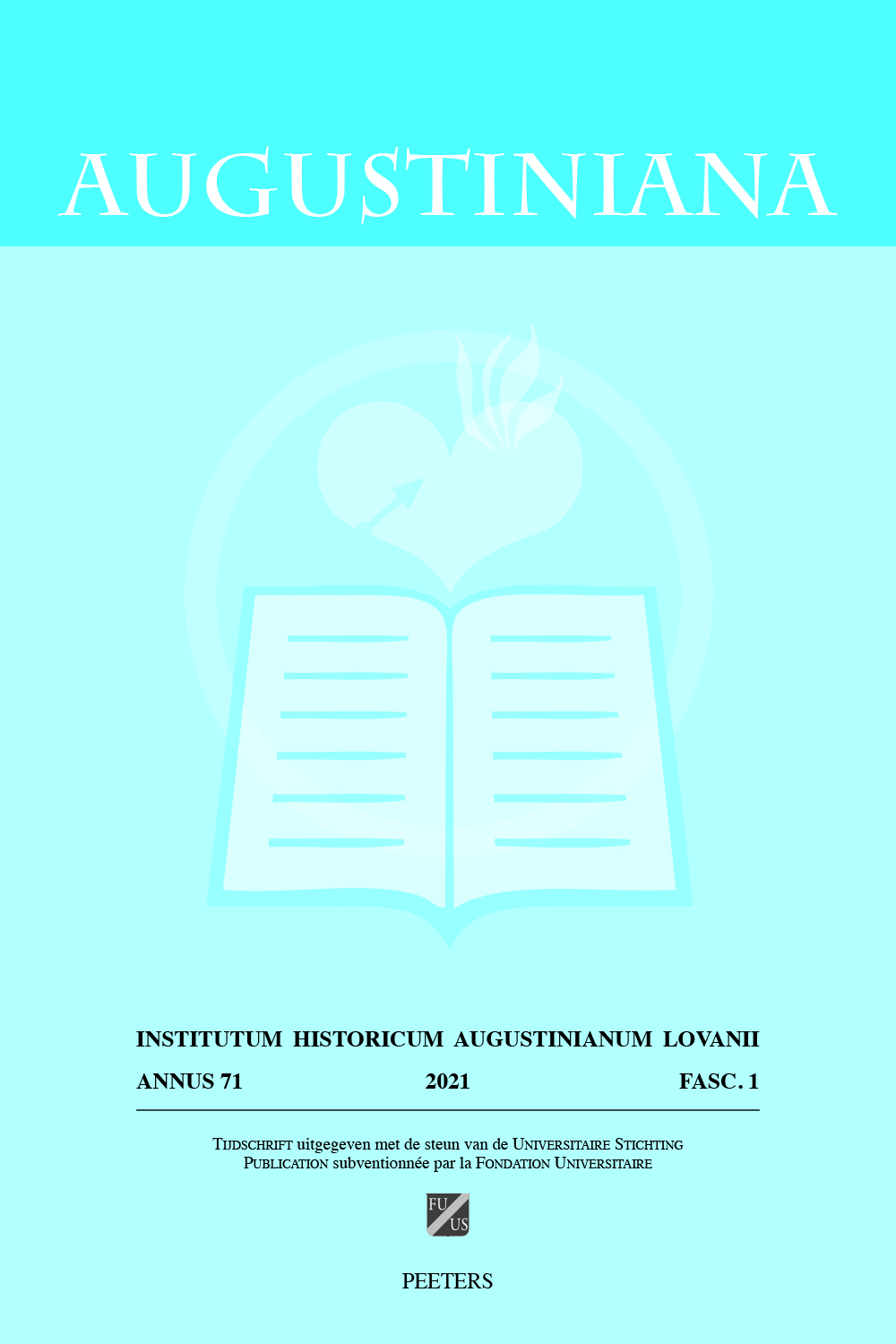 previous article in this issue previous article in this issue | next article in this issue  |

|
Document Details : Title: Die Liebe als ein Gleichnis der Dreifaltigkeit Subtitle: Platonische Motive in Augustins De trinitate VIII Author(s): KARFÍKOVÁ, Lenka Journal: Augustiniana Volume: 71 Issue: 2 Date: 2021 Pages: 181-213 DOI: 10.2143/AUG.71.2.3290226 Abstract : Buch VIII von Augustins De trinitate stellt eine Überleitung von der biblischen und peripatetischen Vorbereitung (trin. I-VII) zu seiner Analyse des Gottesbildes im menschlichen Geist (trin. IX-XIV) und der Betrachtung der Heiligen Dreifaltigkeit dar, die dank dieses Bildes in den Blick kommt (trin. XV). Bei dieser Überleitung schöpft Augustinus seine Inspiration sowohl aus der Bibel als auch aus der platonischen Tradition, um seinen Aufstieg zu Gott als der Wahrheit (trin. VIII,1,2-2,3), dem Guten (trin. VIII,3,4-5) und der Liebe (trin. VIII,4,6-10,14) zu vollenden. Wie in der platonischen Tradition wäre die Suche nach dem Wahren und Guten nicht möglich ohne vorherige Kenntnis davon, was Augustinus als «eingeprägte Vorstellung» des Guten versteht (trin. VIII,3,4). In Augustins Augen genügt es jedoch nicht, die intelligible Form des Guten zu erkennen, man soll sich ihr auch zuwenden und in der Liebe anschließen. Zugleich sieht man hier die neuplatonische Struktur der «Zuwendung» der abgeleiteten Hypostasen zu ihrem Ursprung. Schließlich findet die Hypostasierung der Liebe als drittes Element in Augustins Dreiheit des Liebenden, des Geliebten und der Liebe selbst (trin. VIII,10,14) ihre Analogie im platonischen Eros als dämonischer Kraft. Was bei Platon nicht zu finden ist, aber von Plotin angedeutet wird (enn. VI,8[39],15,1), ist die selbstreferenzielle Liebe, die Liebe zur Liebe selbst, die in Augustins Analyse eine wichtige Rolle spielt. Gerade dieser Punkt scheint ihm nicht nur den Weg zur Dreifaltigkeit in Gott zu öffnen, sondern zugleich zur Konsubstantialität der drei Hypostasen, wo wiederum die Weisheit (der Sohn) der Liebe (dem Heiligen Geist) vorausgeht. Book VIII of Augustine’s De trinitate is a transition from the biblical and peripatetic preparation (trin. I-VII) to his analysis of the image of God in the human mind (trin. IX-XIV) and the contemplation of the Holy Trinity found thanks to this image (trin. XV). Making this transition, Augustine draws his inspiration from both the Bible and the Platonic tradition to accomplish his ascent to God as the Truth (trin. VIII,1,2-2,3), the Good (trin. VIII,3,4-5), and, finally, Love (trin. VIII,4,6-10,14). As in the Platonic tradition, the search for the Truth and the Good would not be possible without any preceding knowledge of it, which Augustine understands as the ‘impressed notion’ of the Good (trin. VIII,3,4). However, it is not enough, in Augustine’s eyes, to know the intelligible form of the Good; what is needed is to attach oneself to it in love. Even here, we can recognize the Neoplatonic structure of the ‘conversion’ of the derived hypostases to their origin. Finally, the hypostasizing of love as the third element in Augustine’s trinity of the lover, beloved, and love itself (trin. VIII,10,14) finds its analogy in the Platonic Eros as a demonic force. What is not to be found in Plato, but is mentioned by Plotinus (enn. VI,8[39],15,1), is self-referential love, the love of love itself, which is very important in Augustine’s analysis. For him this very point seems to open the way not only to the Trinity in God but, at the same time, to the consubstantiality of the three hypostases, where, again, Wisdom (the Son) precedes Love (the Holy Spirit). |
|
